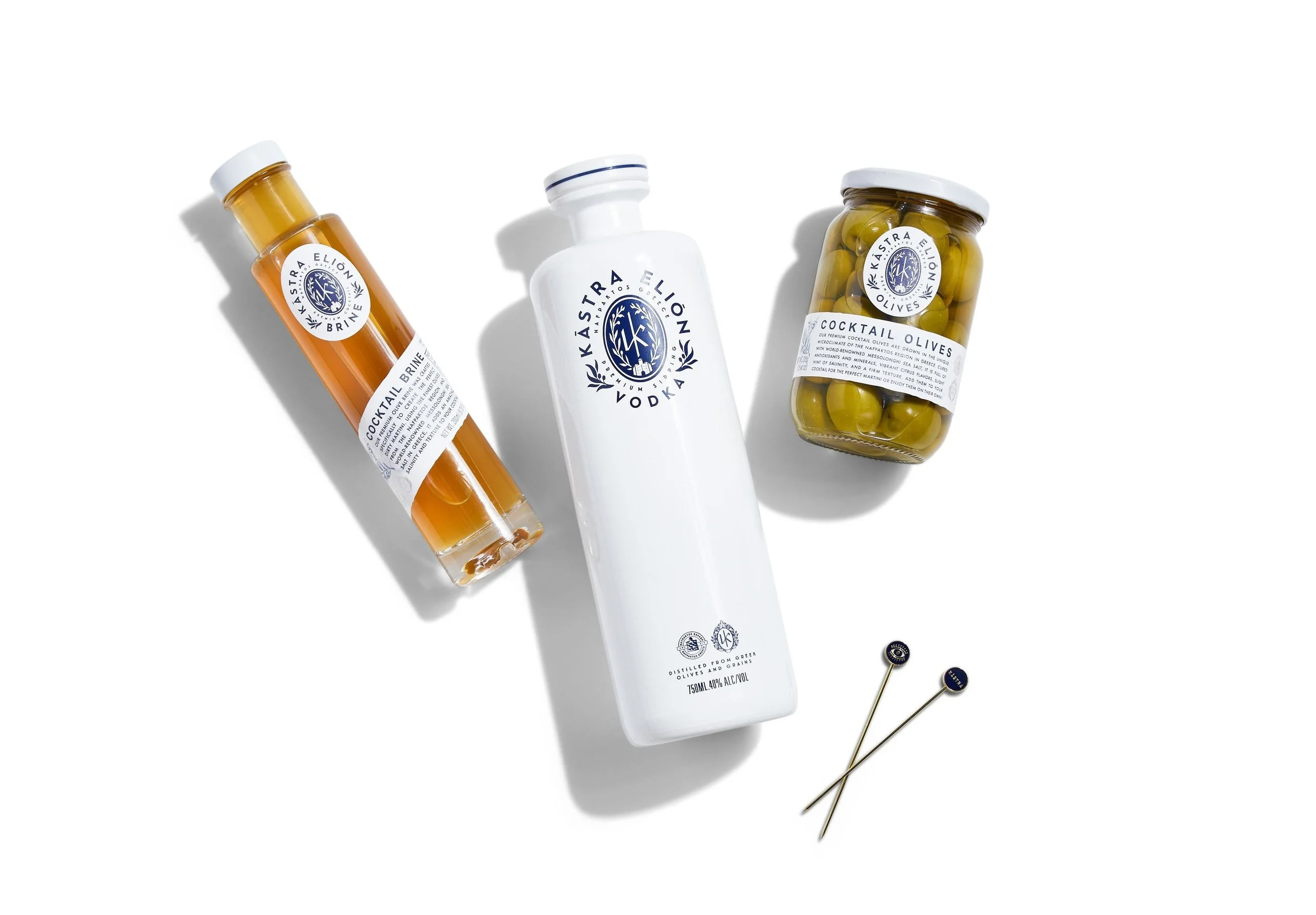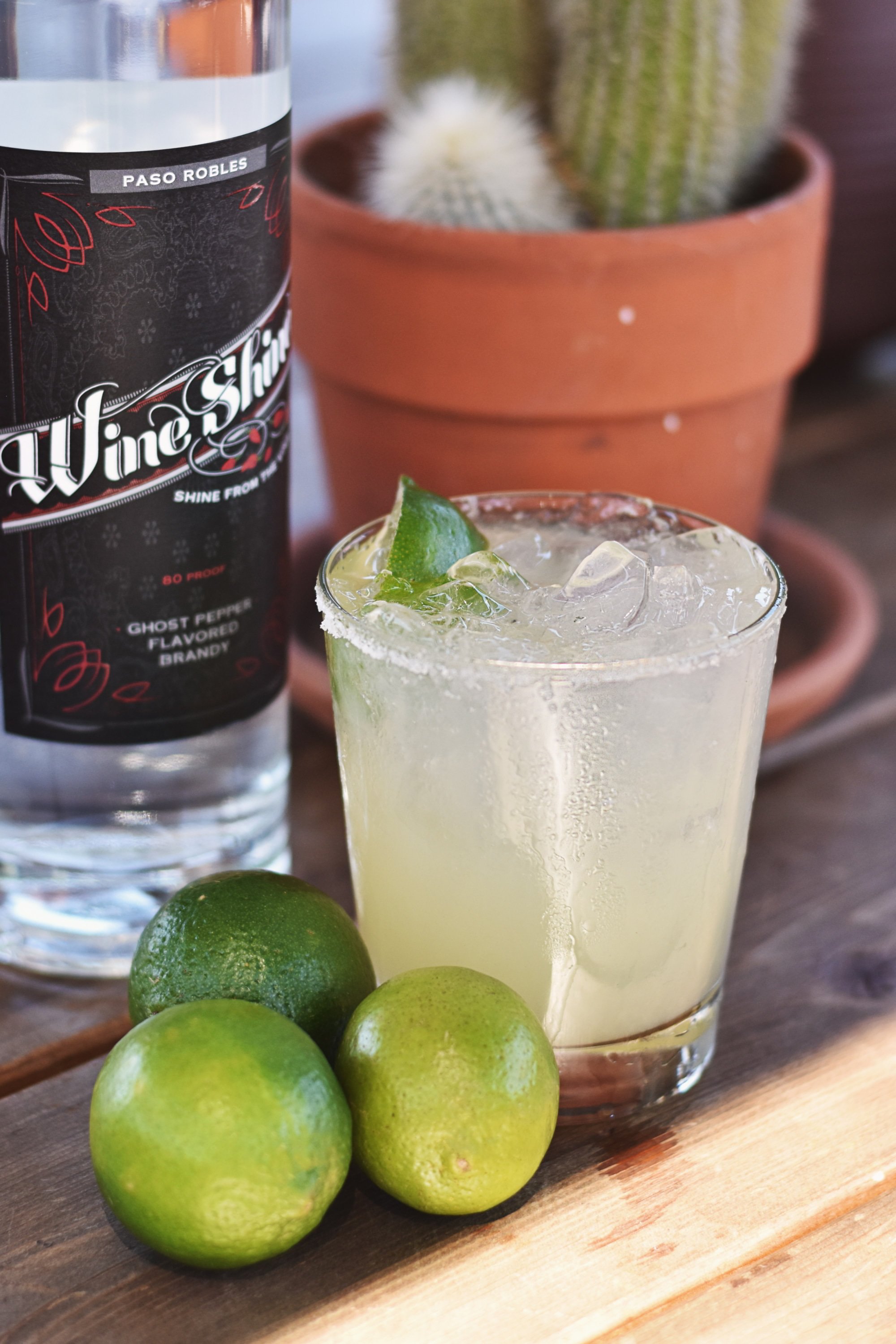The Rise of Savory Spirits
Basil Martini photo credit Depositphotos
The first commercially available flavored vodka was Absolut Peppar, introduced by Absolut in 1986 and after that there was a flurry of flavored vodkas. Around 2022, bars featuring martinis engineered to taste like everything from Caesar salad to hot dogs, spritzes inspired by pizza, and gin cocktails with fish sauce were making headlines. Since then, they've become even more expected at cocktail bars, proof that salty, spicy, sweet and sour aren’t the only flavor fields where drinks can play. That cocktail trend has cleared a runway for savory spirits to take off.
Herbs & Savory Spice Are Nice
St. George Basil Eau de Vie
In Alameda, California, St. George Spirits offers a basil eau de vie bursting with fresh-from-the-garden fragrance and a green chile vodka with the perfect amount of heat. An aquavit from Faer Isles Distillery in the Faroe Islands sings with briny seaweed; dill and peppercorn dance in the Silver Pickle Vodka from Dunrobin Distilleries in Canada; and in Spain, Gin Mare’s Mediterranean Gin boasts basil, rosemary, and thyme.
Garden Flavors
Coopers Daughter Ramp Vodka
In Claverack, New York, Cooper’s Daughter Spirits makes a ramp vodka whose bottle, when opened, fills a room with a green and grassy and pungent onion aroma. Michigan-grown asparagus brings local flavor to Asparagin at Long Road Distillers in Grand Rapids. Varieties of mushroom shape an entire roster of vodkas at Mushroom Spirits Distillery as well as a gin from Isolation Proof, both upstate New York. San Francisco-based and Jalisco-distilled, tequila from 21Seeds is infused with crisp cucumber and fiery jalapeño; and Tin City Distillery in Paso Robles, California dials up the heat with a ghost pepper brandy. Even a supremely clean vodka Kástra Elión, distilled with olives in Greece, possesses a buttery quality and savory note that’s made it a workhorse foundation for today’s variations of dirty martinis.
From Cocktail Ambitions to Love for Local Crops
Some of these spirits have been developed in response to the growing popularity of savory cocktails, while others are born from a distiller wanting to embrace a certain favorite flavor or local crop—it’s no accident that these spirits are then an ideal match for the rich or spicy or salty profiles today’s cocktail drinker seeks. That consumer might discover a seaweed aquavit or asparagus gin in a cocktail at a bar or restaurant; their interest piqued, they can then get to know these spirits on their own, understand their savory qualities on a deeper level, and find other ways to mix and enjoy them at home.
Roots in the Spicy Margarita
Mike Blash of Tin City
One cocktail that predates more recent savory inventions is the spicy margarita. It helped serve as inspiration for Tin City’s Ghost Pepper Brandy. One of the distillery’s owners Michael Blash worked as a bartender for 25 years before venturing out to make spirits, spending time behind the stick at a Mexican restaurant.
“I made a ton of spicy margaritas, and there weren’t any spicy spirits that elevated the spice of the cocktail properly,” he says. “We didn’t want to make a spicy syrup, so we ended up doing what everyone else was doing, which was muddling jalapeños into the drink, and it was inconsistent at best.” That gap in the spirits market prompted Blash to create a beautifully balanced spirit that delivered on the heat, and at an even more impactful level with ghost peppers rather than jalapeños. Tin City used to grow its own peppers; now it sources to keep up with demand, using about five pounds per 100 gallons of spirit. The ghost peppers go into the gin basket, and Blash says they also do a couple of different extractions with the peppers and different proofs of brandy to then blend together.
21Seeds Cucumber Jalapeño Seed & Soda
21Seeds’s Cucumber Jalapeño tequila was made with cocktails in mind, but not a specific spicy or savory niche. 21Seeds brand manager Megan Green says that while spicy margaritas had long been trending, the distillery’s cofounder Kat Hantas was more generally playing around with the ingredients that tend to show up in tequila cocktails across the board because of how well they play with the spirit—like oranges, grapefruit, cucumbers, and jalapeños. This resulted in Hantas creating three expressions around those perfect pairings: Grapefruit Hibiscus, Valencia Orange, and Cucumber Jalapeño. The tequila is distilled twice and cold-filtered before it’s infused with the peppers and cucumbers—and yes, it is a natural fit for a spicy margarita; but Green also recommends it to spice up ranch water.
Drink Local
Sophie Newsome of Cooper's Daughter
For Cooper’s Daughter, Ramp Vodka was born as an homage to the local landscape and agriculture of the distillery’s upstate New York surroundings.
“Ramps are such a special and celebrated wild plant in the Hudson Valley,” says Cooper’s Daughter co-owner, flavor developer, and chief creative officer Sophie Newsome. “[They] only grow for a few weeks each year in the early spring. We like to think of our Ramp Vodka as a little time capsule that allows people and chefs to enjoy the flavors of ramps year-round.”
Newsome adds that her team began by sustainably foraging their own ramps on private family property when the vodka launched in 2018, just a year after the distillery had started selling spirits. Demand soon outpaced their own foraging output, however, so they now partner with local forager Tivoli Mushrooms. Ramp Vodka evocatively captures a certain time in a particular place, but it was also created with cooking and savory cocktails in mind, Newsome says.
Kástra Elión’s vodka lives on the opposite end of the flavor spectrum from Cooper’s Daughter’s ramp vodka—where the latter is bold and its star ingredient immediately recognizable, the former is clean and not actually olive-flavored. But it, too, is a spirit made to showcase a distinctive crop from a specific place, with a secondary purpose of grounding savory cocktails.
Frank Mihalopoulos of Kástra Elión
Kástra Elión cofounder and distiller Frank Mihalopoulos says the vodka is a nod to his Greek background; he moved to the United States when he was 12 and still has family in the country. Olives and olive oil are important to Greek culture, and Kástra Elión selects three (undisclosed) olive varieties to represent Greece’s mountain, sea, and valley microclimates and how the olives change between them. But the distillery team wanted to embrace the essence of these olives without creating an overtly olive-flavored spirit. Mihalopoulos has been a flavor chemist for over 40 years, and explains that he blends the olives with wheat before distilling to 95 percent alcohol and carefully proofing down to 40 percent with water also from Greece.
Kástra Elión vodka, dirty martini brine and olives
“There’s a salinity [in the vodka] coming from the synergy of the water’s minerals,” Mihalopoulos says, adding that the olives’ buttery character act as a binding final note to the subtle wheat and water flavors. The olives have compounds that highlight complex notes in the wheat during fermentation and distillation, the way certain yeast strains catalyze biotransformation during beer’s fermentation, bringing out different hop aromas.
“This vodka was designed to address the problem of bad vodka that has things in it to cover it up,” Mihalopoulos says, explaining that Kástra Elión is clean but lends itself to savory drinks with its slight salinity and buttery complexity. “We developed a dirty martini mixer to use with the vodka. We drain the olives that have been fermenting for six months; the mix is made with that brine.”
Spice, Umami, Salt, and Herbaceous Spirits
Tin City Ghost Pepper Brandy
The savory drink trend has created space for distillers to get more creative—they’re no longer limited to fruits and florals, or even herbs and spice, which expands the possibilities for ingredients to play with and highlight especially in their immediate surroundings. The high-quality results of this creativity and the natural ingredients then attract even more imbibers, continuing a cycle of growth for savory spirits.
A bit of education comes along with introducing consumers to savory flavor profiles in their spirits, says Blash. Cocktails are the secret to success.
“They help immensely, it’s why we started sharing our cocktail recipes,” he explains. “The more people know how to work with something like Ghost Pepper Brandy, the more inclined they are to buy a bottle.”
Many of these savory spirits, like 21Seeds’s Cucumber Jalapeño tequila, are just as enjoyable on their own as they are in a mixed drink. This gives consumers the chance to fully explore these still novel flavor profiles. With this just being the beginning of savory ingredients taking center stage in spirits, we can expect to see many more intriguing innovations from distillers in years to come, ensuring the trend evolves into a more permanent category.









